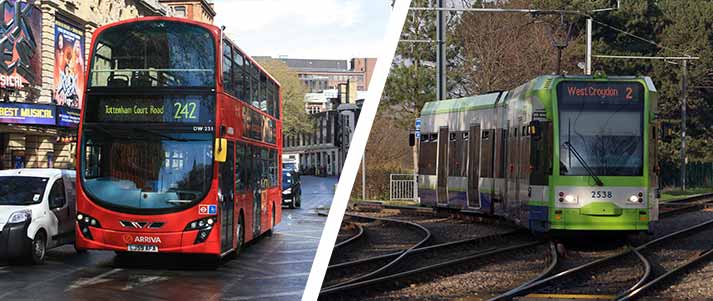London: Student City Guide
London now has a population of over 8 million people – but what can it offer students? Our bumper guide to the capital has everything you need to know!

Credit: QQ7 – Shutterstock
Considering going to university in London? Already there? Either way, great choice!
The UK's capital city is a melting pot of people from every imaginable background, and you're bound to find the people and places that'll help you make it your new home.
But what exactly is on offer for students in London? And is the city just a concrete jungle with nowhere to escape (spoiler: it's not!)?
To answer all these questions and more, we've used real students' experiences of London to create the ultimate guide to a place that was recently ranked as the best student city in the world!
London: Key facts
- Number of universities: around 40 (inc. specialist institutions)
- Student population: 500,000 (approx.)
- International students: 180,000 (approx.)
- Average rent cost: £663 a month
- Average cost of a pint: £5.90
What's in this guide?
Universities in London
Use the numbers below to identify each university on the map, or click the icon in the top left of the map to open the key.
London has more universities than any other region or city in the UK. Fact.
If you haven't yet decided where in London you'd like to study, here's a quick summary of what the city has to offer.
-
Imperial College London
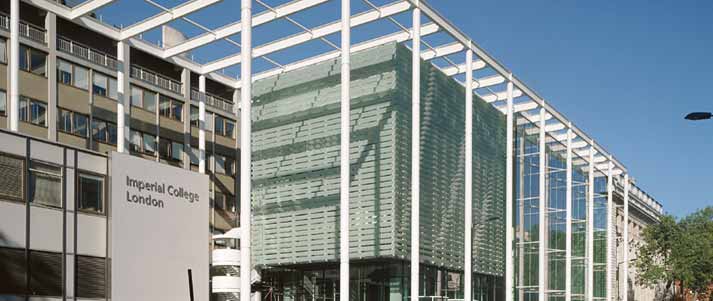
Credit: Colt International Limited - Flickr
Where is Imperial in London?
South Kensington, West London.
About Imperial
Imperial College London currently ranks as London's number one university and frequently finds itself among the world's best unis too.
Imperial is a research-intensive university that focuses mostly on STEM subjects – so we're talking Biology, Computer Science, Engineering (of all varieties), Medicine and pretty much any other subject where you'd think "they probably study in a lab".
-
London School of Economics and Political Science (LSE)
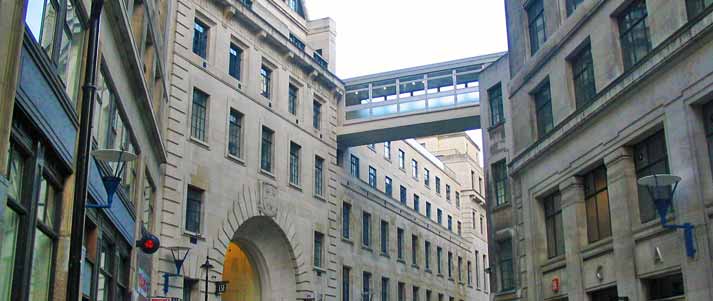
Credit: Umezo KAMATA - Wikimedia Commons
Where is LSE in London?
Westminster, Central London.
About LSE
The London School of Economics and Political Science (more commonly referred to as the London School of Economics, or LSE) frequently interchanges with Imperial College as London's top university, but its strengths lie in very different areas.
As its name suggests, LSE specialises in numerical and social sciences, making this a great place to study if you're interested in Accounting, Geography, History, Philosophy and other related subjects.
-
University College London (UCL)
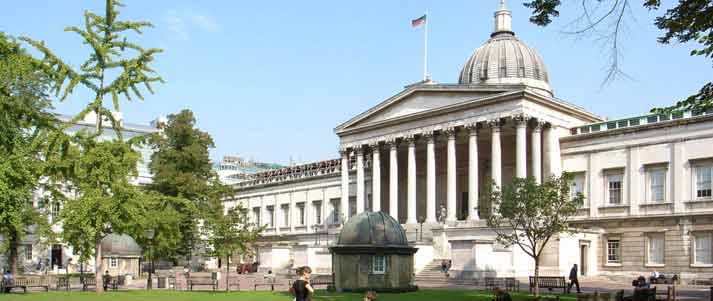
Credit: Steve Cadman - Flickr
Where is UCL in London?
Camden, North London, and Stratford, East London
About UCL
It seems a bit unfair that London has so many world-renowned universities. But it does, and University College London is yet another one to add to the list.
UCL doesn't really have a specialist area as such: it excels in pretty much every subject that it offers. So whether you're interested in Astronomy or Art, Linguistics or Law, UCL is a solid choice.
-
King's College London
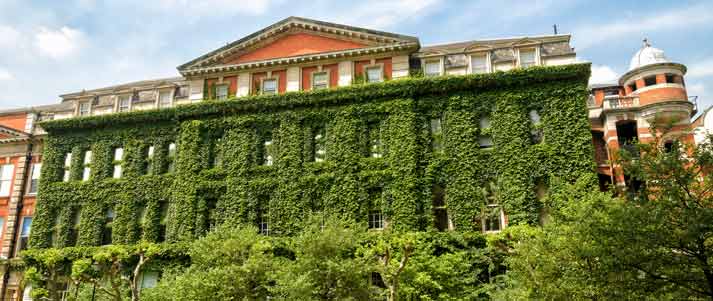
Credit: Rob Swatski - Flickr
Where is King's College in London?
Various locations in Central London.
About King's College
Spread across five campuses – including the one above which looks like the gardens from Game of Thrones – King's College London is one of the oldest universities in England. And no, King's College London isn't the same as the University of Cambridge's King's College – people always get them mixed up!
King's College has a glowing reputation for research, offers degrees in a whole range of subjects and can even boast Desmond Tutu among its graduates – impressive!
-
Queen Mary, University of London

Credit: Ewan Munro - Flickr
Where is Queen Mary in London?
Various locations across East and Central London
About Queen Mary
Queen Mary University of London is spread across six campuses in East and Central London, with the majority of students based in its Mile End and Whitechapel campuses.
These locations offer the full campus lifestyle, with all facilities and accommodation in one location. Perfect if you're looking to roll straight out of bed and into your lectures.
Queen Mary offers degrees in most subject areas, excelling in most.
Other universities in London
We weren't lying when we said that London had a lot of unis! Below are the remaining universities in the capital, and note that we've not included specialist institutions that only offer one or two subjects.
Use the numbers assigned here (and in the list above) to find each university on the map above.
- SOAS University of London
- Brunel University London
- St George's, University of London
- Goldsmiths, University of London
- City, University of London
- University of Roehampton
- University of West London
- University of Westminster
- University of the Arts, London
- London South Bank University
- Kingston University
- University of Greenwich
- St Mary's University, Twickenham
- Middlesex University
- University of East London
- Birkbeck, University of London
- London Metropolitan University
The cost of living in London

Credit: Ann in the uk – Shutterstock
We won't lie, it's not cheap to live in the capital – in fact, it has the highest cost of living of any city in the UK.
Each year we run the National Student Money Survey, and London is consistently the most expensive place to live as a student. In 2024, the average monthly expenditure of students at London universities was £1211. That's £133 above the national average.
The biggest contributing factor is rent, which hits an average of £506/month in London – £678 above the national average of £439/month.
But it's not just keeping a roof over your head that comes at a premium in London – pretty much every type of expenditure is higher in the capital compared to the rest of the country. As a result, London students receive a larger Maintenance Loan than students outside the capital.
As you can see from the table below, the only exception to this (according to our stats) is the cost of socialising. However, anyone who's ever seen the price of a pint in London would agree that this may just indicate that students here are going out less often than at universities elsewhere in the UK (or just drinking less).
Here's the full lowdown on just how much more it costs to live if you're studying at a university in London.
Cost of living as a student in London
| Expense | London | National student average | London compared to average |
|---|---|---|---|
| Rent | £506 | £439 | +£67 |
| Groceries | £123 | £113 | +£10 |
| Takeaways & eating out | £83 | £66 | +£17 |
| Going out & socialising | £73 | £69 | +£4 |
| Travel | £91 | £69 | +£22 |
As for the most important expense of all (the cost of a pint), it's sadly more of the same. According to recent research, the average cost of a pint in London stands at a whopping £5.90 – well above the national average (£4.21).
Transport in London
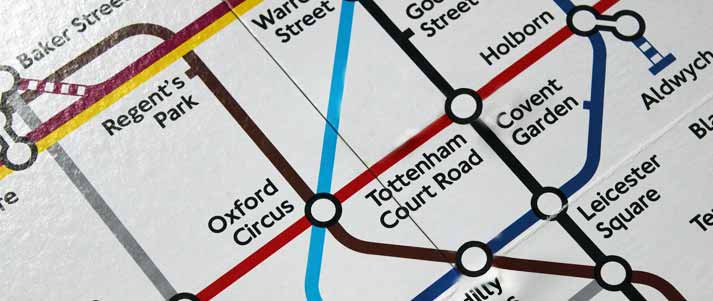
London's public transport network is arguably the best in the UK (and certainly the biggest).
As well as the world-famous London Underground network (the Tube), there's the DLR (an automated light railway), trams, the London Overground, buses, boats, countless National Rail services and even a cable car!
There's a couple of main things you'll need to be aware of when travelling around London on public transport. One is that ticket prices often vary based on whether or not you're travelling in peak hours.
Peak fares apply Monday to Friday (excluding bank holidays) between 6.30am and 9.30am, and between 4pm and 7pm. Off-peak fares apply at all other times, as well as if you're travelling from a station outside Zone 1 to one within Zone 1 during the afternoon peak period.
The peak/off-peak system applies to the Tube, DLR, London Overground, Elizabeth line and National Rail services in London, but not on other forms of public transport (including buses).
Oh, and if you're wondering what the hell Zone 1 means – the London transport map is split into zones, as shown in this map of every station in the network (excluding buses). Travelling between zones, and into the centre of London (lower-numbered zones), costs more than a journey within a single zone or between high-numbered zones (away from the centre).
Don't worry if it all seems a bit much to take in – most non-native Londoners say that, on the whole, the London transport system is really easy to pick up!
London Underground (Tube), London Overground and DLR
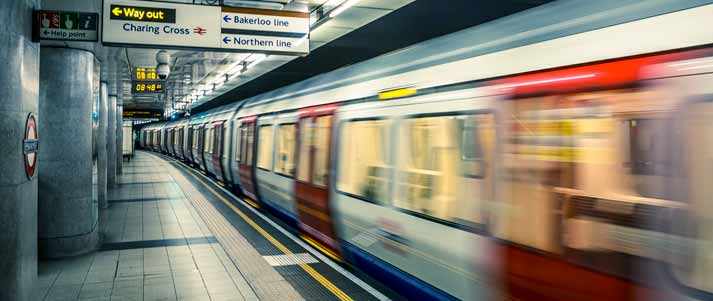
In terms of getting around day-to-day, the Tube will usually be the quickest, cheapest and most convenient option.
As you move towards the centre of London, pretty much everywhere is within walking distance of at least one Tube station, if not more.
There are 11 Tube lines in total, and at some point or another, they all overlap with at least one other line. This makes it super easy to switch trains and navigate across London in every possible direction, and also avoid (to an extent) the issue you have in many other cities where you have to travel into the centre just to get anywhere else.
In 2016, the Night Tube was launched, meaning a select number of lines (and, in some cases, a select number of each line's stations) now operate throughout Friday and Saturday night (making it perfect for post-night out transport). Check out the Night Tube map to view participating lines and stations.
The DLR (Docklands Light Railway) and London Overground also feature on the Tube map. The DLR is localised to the Docklands area of East London (and slightly beyond), while the London Overground serves almost all corners of London (excluding the centre).
However, despite the differences between the DLR, London Overground and Tube (mostly just that they look different!), a journey on each of them is priced in exactly the same way – hence, we've grouped them together.
How much does a journey on the Tube, DLR or London Overground cost?
It's hard to say just how much a journey on the Tube, DLR or London Overground costs. Why? Well, there are so many variations based on where you're travelling to, where you're travelling from, what time of day it is and even the number of journeys you've already made that day.
We'd recommend using Transport for London's (TfL) single fare finder, which will tell you how much a specific journey costs.
Oyster and contactless cards offer the cheapest rates for Tube journeys, and even if you're travelling multiple times in one day, the daily fare cap ensures you'll never pay more than you would have with other payment methods.
However, if you don't have an Oyster or contactless card, you can buy a paper Travelcard or single/return ticket at any Tube station.
Buses and Tramlink
Buses are often a much slower way of getting around London (especially for longer distances), but they're perfect for short journeys (like coming back from the supermarket with lots of bags) and accessing parts of the city that aren't as well-served by the Tube or train.
What's more, lots of bus routes run 24/7 – and unlike the Night Tube, this isn't limited to just Fridays and Saturdays. In other words, if you're going on a night out in London, the bus is one of the quickest and safest ways to get home.
For newbies to London, remember to always get on at the front of the bus and get off in the middle (unless it's one of the new buses with three doors, in which case you can get on and off using any of them).
As for Tramlink, a good proportion of Londoners are completely unaware that a tram system even exists in the city – although, to be fair, it's almost entirely separate to the rest of the Tube map and only serves South London.
Nonetheless, if you do live, work or study in South London, or are even just visiting the area, it's definitely the quickest way to navigate your way across Croydon and the surrounding areas.
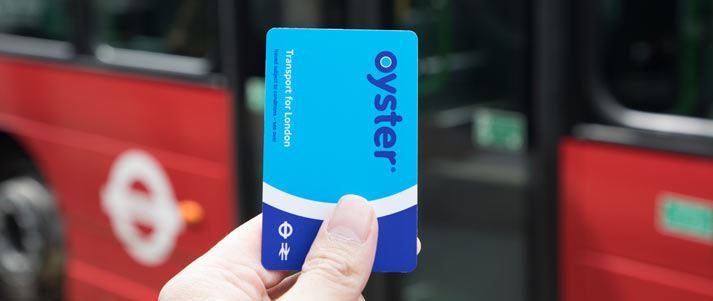
Credit: charnsitr – Shutterstock
To use the buses and trams in London you need either a Travelcard, Oyster card, contactless card or One Day Bus & Tram Pass. You just need to tap it on the reader when you get on (or show it to the driver if it's a paper ticket) – but you don't need to tap out when getting off.
While you do need to tap out when you've finished a journey on any other form of transport in London, you don't on buses and trams. This is because bus and tram journeys cost the exact same amount, no matter how far you travel.
Note that you can't buy or top up your payment method at a bus stop or on the bus or tram. You'll have to go to a participating newsagent or station to do this.
How much does a London bus or tram journey cost?
No matter how far you're travelling or what time of day it is, you pay a flat fee of £1.75 on buses and trams in London.
This flat fee also means that you don't need to know the name of your destination stop to tell the driver when you board – you just pay the fee and take your seat.
London buses and trams now also operate a Hopper fare system. Once you tap in on the first bus or tram of your journey, you can travel on as many buses or trams for free within an hour of touching in (as long as you touch in using the same card).
National Rail
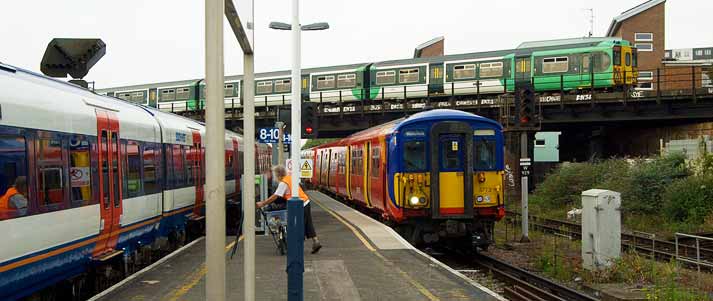
Credit: Ryan Taylor - Flickr
National Rail trains in London are often subject to the same frustrating delays as they are outside of the capital, but when they're working at full efficiency, they can be a great way to travel long distances in London.
While Tube trains will always stop at every single station on the line, there are often fast National Rail services that only stop at the major destinations. In some cases, this means you can get from Zone 6 to Zone 1 in as little as 20 minutes!
How much does a National Rail journey cost in London?
Travelling within the TfL zones, a National Rail journey is priced in the same way as Tube journeys (i.e. it varies depending on which zones you're travelling to/from, as well as what time of day it is).
However, a National Rail journey does cost slightly more than a Tube journey between equivalent zones. Use the single fare finder to see how much it'll cost you, and recap how and where you can buy your tickets.
It's worth remembering that contactless/Oyster cards and paper Travelcards are only valid for travel within the TfL zones. Even if you start your journey within London, if your final destination isn't in a TfL zone, you will have to buy a paper ticket.
Boris Bikes
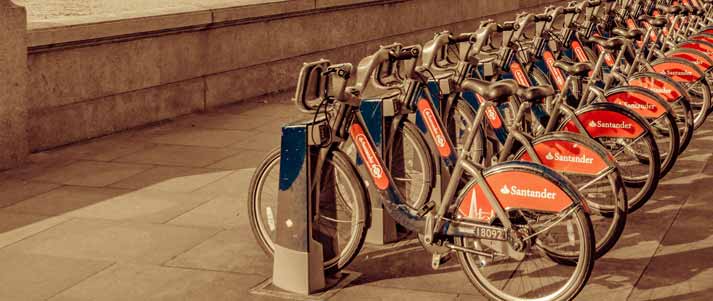
Credit: Alan Newman - An1 Photography - Flickr
Officially called Santander Cycles, these rental bicycles are more often referred to as Boris Bikes, as Boris Johnson was mayor when the scheme launched.
Dotted across Central London (and some of its surroundings – see this map) are 800 docking stations that hold over 12,000 Boris Bikes. These bikes can be rented by members of the public, and all you have to do is pay up and return it to another docking station when you're done.
Boris Bikes aren't the most comfortable things in the world – they've got one gear, no suspension and weigh a ton – but they're dirt cheap and offer an eco-friendly way to get around and see the city.
If you don't like the look of Boris Bikes, there's an increasing number of private bike share schemes in London, such as Uber bikes. Unlike Boris Bikes, you don't need to dock their bikes when you're done. Check out their websites for more details.
How much do Boris Bikes cost?
Renting a Boris Bike costs £1.65 for up to 30 minutes. You can rent the bike for up to 24 hours and pay the accumulation of the 30 minute rate.
You can also buy a monthly membership for £20, which offers unlimited rides for up to 60 minutes for 30 days, or an annual Boris Bike membership for £120, but we're not convinced that this is worth it.
Given the fairly primitive nature of the bikes, regular cyclists are probably better off buying a bike of their own. Check out our deals section to see if there are any going cheap!
Uber

Ok, so we're going a bit off-piste here. Uber isn't technically public transport, and it's definitely not part of TfL (in fact, TfL is constantly trying to reel Uber in). But there's no denying that Uber is a quick, easy and relatively cheap way of getting around London (cheaper than black cabs, for sure), so we've got to cover it.
Uber is pretty easy to use, and as it's not exclusive to London there's a fair chance that you've already got the app. While Uber is pretty much exactly the same wherever you use it, there is one crucial aspect that changes: the price.
How much does Uber cost in London?
Uber cost up your trip by using a base rate (determined by the time and distance of your trip), a London operating fee (currently £1.50) and the availability of drivers.
There is also a minimum fare of £5. This means that if you have an especially short journey where the starting charge plus the total miles and minutes still equals less than £5, you will be charged £5.
Tips for travelling in London
-
Get an Oyster card
Now that contactless cards can be used to tap in and out on London transport in exactly the same way as Oyster cards, you may wonder why anyone would bother getting an Oyster card.
As a London student aged 18 or over, you're entitled to the 18+ Student Oyster card. This will save you 30% on the cost of adult-rate Travelcards, and Bus and Tram Pass season tickets.
You can apply for an 18+ Student Oyster card online, just as you can with any other Oyster card. It costs £20, but it's well worth it if you're intending to buy any of the eligible discounted tickets.
If you're not planning to buy a Travelcard or travel on the bus or tram regularly enough to warrant a season ticket, don't worry – there's another massive advantage to using an Oyster instead of a contactless card...
-
Link your railcard to your Oyster

Credit: National Rail
The 16–25 railcard and the 26–30 railcard are absolute must-haves for students, saving you a third on all rail travel.
But for students in London, there's a second saving: you can link it to your Oyster card and save 34% on off-peak fares. You can't link a railcard to a contactless card, so to take advantage of this offer you'll have to buy an Oyster card.
Just note that the savings only apply to off-peak fares on the Tube, DLR, London Overground, TfL Rail and most National Rail services in London. That said, in July and August the off-peak rule is dropped and the discount applies at all hours of the day.
-
Consider a Travelcard
We mentioned that the 18+ Student Oyster Card gets you 30% off the cost of a Travelcard, but when exactly is it worth getting a Travelcard, and when should you just travel pay-as-you-go? Well, there isn't just one answer – it all depends on how often you plan to travel, and when.
If you expect to travel to and from uni/work during peak times at least five days a week, we'd say that it's probably worth getting a Travelcard. If you're mainly planning to travel during off-peak hours, and fewer than five days a week, it's probably best to stick to pay-as-you-go (with your railcard linked, of course!).
-
Use Citymapper

Credit: Piotr Swat – Shutterstock
There are a few apps out there that can help you navigate London, but Citymapper is widely considered to be the best of the bunch.
It's super easy to use and updates with live data regarding any delays or cancellations that are currently affecting the London transport system. If you want to get somewhere fast, Citymapper is your friend.
Oh, and it's not just London on the app, either – loads of UK cities (and non-UK cities too) are available, so this app will come in handy wherever you are!
Where to live in London

Credit: dotshock – Shutterstock
As you might have guessed from that transport section, London is not only massive but also incredibly well connected.
So much so, in fact, that we're prepared to stick our necks out and say that it's possible to travel between any two points, anywhere in London, in under two hours (which sounds long – and it kind of is – but given the sheer size of London, is remarkably impressive).
What this means for you, is that although your university may be in one part of London, it's entirely possible to live in a separate part of the city. You'll still make it to uni within the confines of a 'normal' commute (although whether or not you want the inconvenience of a two hour commute, is another thing altogether).
This is particularly true if your university is in or around the centre of London. These areas are easily accessible from pretty much anywhere else in the city, and as long as you live near a Tube or National Rail station, you should be able to make it there in under an hour and a half.
For that very reason, plenty of students at London universities whose families also live in London choose not to move out when they go to uni. This usually works out as a cheaper option, assuming that the cost of commuting isn't too high.
However, we understand that you may not want to commute an hour and a half (or more) to get to uni – especially if you're new to the city. What are your options then?
Halls of residence
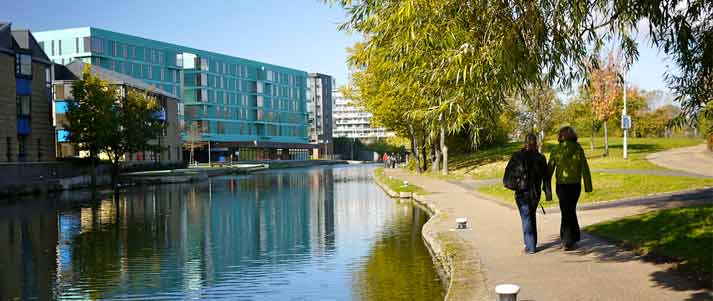
Credit: Ivan Lian - Flickr
Although most universities will have at least some halls of residence, the supply is a lot more limited than it is elsewhere in the country.
Many London unis – particularly those towards the centre of the city – don't guarantee a place in halls for first-year students. Some may even automatically reject accommodation applications from students who already live within a certain distance of the uni (or within a certain area, like the M25).
However, to help relieve some of the pressure on university halls of residence, the University of London (UoL, a collegiate formed of a number of London's universities) has several standalone halls near the centre of London.
There are eight University of London Intercollegiate Halls in total, although not all of them accept all types of students (first-year undergraduates or PhD students may be excluded, for example).
Most universities within the UoL are assigned a certain number of rooms across the halls, but it's worth noting that the cost of rent is typically higher than in each university's own accommodation.
Private halls of residence

Credit: George Rex - Flickr
It probably won't surprise you to learn that private halls of residence are like university halls of residence, except they're privately owned.
Like most university towns and cities, private halls are all over London and present yet another option if you're unsuccessful in applying for university halls (or don't want to live in private housing).
Private halls can be very, very nice indeed – but they come at a price. Even the more basic private halls tend to be a lot more expensive than university halls, and when you get into the realms of 'luxury halls' you're talking about £500 per week – if not more!
Private housing
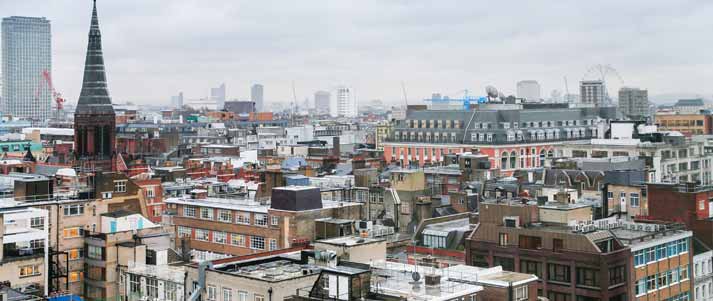
At most universities in the UK, students are encouraged to sort their housing for the next academic year between January and March. While this can sometimes be done in London, it's a lot harder and certainly not the norm.
This is because, unlike most other cities, London doesn't really have a dedicated student rental market. Instead, students have to enter the general rental market and find a place that way.
However, plenty of landlords don't want to let to students, thus ruling out a chunk of the market. What's more, in London it's very common to house-hunt just a month or two (sometimes less!) before you need to move in – not ideal if you're going home for the summer.
Housing in London is at a real premium. This means that properties are often snapped up extremely quickly and negotiating on rent is very difficult.
Although it sounds like the London rental market is all doom and gloom, we're just encouraging you to be realistic and prepared. Here are our top tips for finding student housing in London:
- Start looking in May or June, just in case there are some properties available for late August/early September
- Expect to be disappointed a few times in your search, whether it's thanks to landlords who don't want students or because someone's nabbed a property before you
- Use your university's list of approved landlords/estate agents as this should safeguard you from anyone looking to rip you off or rent you a substandard property.
For more advice on how to get the best student accommodation at the best price, check out our guides to saving money on rent, what to look for when viewing a property and the tenancy rights students should know about.
Employment opportunities for students in London
While the cost of living in London is significantly higher than most of the rest of the UK, the blow is softened somewhat by the fact that the city is home to more jobs – and more high-paying jobs – than elsewhere too.
Part-time jobs

According to our latest National Student Money Survey, 62% of students use part-time jobs as a source of money. Fortunately for students in London, the city is an absolute hotbed of the kinds of industries that students work in.
Hospitality and retail are the two biggies for students and with its booming tourism industry and countless high streets, London has thousands of jobs in these industries that are absolutely perfect for students.
Our part-time job search shows what student jobs in London are on offer right now, or use our guide to finding a part-time job.
Graduate jobs and internships

Upon leaving uni, graduates from all over the UK flock to London in search of work. According to the Office of National Statistics, around 50% of people living in the city are graduates indicating that the movement of grads to the capital isn't slowing down.
Countless companies, both large and small, have offices or headquarters in London. Many of these companies advertise graduate jobs and internships, including banks, government departments, charities and major brands that you'll no doubt be familiar with. Head over to our list of graduate scheme deadlines for a complete picture.
Aside from graduate schemes, there are a huge number of jobs on offer for graduates in London.
Despite efforts to increase opportunities elsewhere in the country, London is still the hub for many industries, including the performing arts, the media, banking, retail and administration (to name but a few). As a result, there are thousands of jobs up for grabs at companies including (but definitely not limited to):
- ASOS
- BBC
- British Airways
- Deloitte
- EE
- EMI Records
- GlaxoSmithKline
- HSBC
- Justgiving
- PwC
- Reach plc
- Royal Mail
- Sainsbury's
- Sky
- Stellantis
- UKTV
- Unilever
Student lifestyle in London
It's not much of an exaggeration to say that when it comes to lifestyle and culture, London pretty much has it all – and what it doesn't have can be easily accessed by the train lines that reach every corner of the UK.
But for now, we'll stick within the confines of the city and explore what London has to offer.
Nightlife
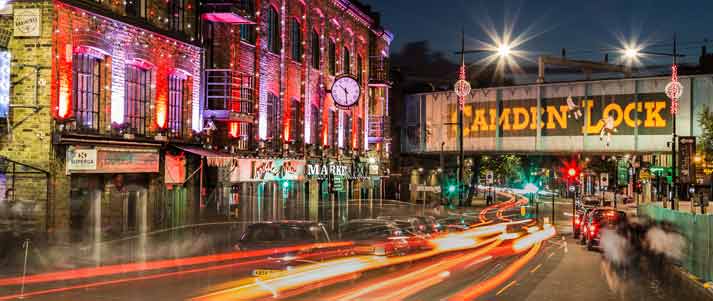
Credit: mickcphoto – Shutterstock
London's nightlife caters to all tastes. As well as each university's own SU bar, there are literally hundreds of nightclubs in London, as well as a few thousand more bars and pubs to boot.
Tiger Tiger London is one of the city's most iconic venues and has six rooms, each playing a different style of music.
Widely considered to be one of the best nightclubs in the world, Fabric is a Mecca for fans of drum and bass, hip hop, grime, house, techno and dubstep. Fabric doesn't have a student night, as such, but you can get discounted tickets with your student ID.
Offering some of the same kinds of music as Fabric, plus a whole lot more, Ministry of Sound (yes, the same one that does the compilation albums) is yet another world-renowned club worth a visit. Students can get discounted tickets on Fridays and Saturdays, and the venue also frequently hosts student nights on Tuesdays.
If you're not a fan of that kind of music, worry not. Propaganda at the Electric Ballroom in Camden is a huge favourite with students, playing a mix of indie hits and mainstream tunes that create a great feel-good vibe.

London also has a huge LGBTQ+ nightlife scene – especially around Soho – with the likes of Heaven, G-A-Y and the Royal Vauxhall Tavern among the most popular spots.
Honestly, it'd be easy to dedicate an entire dissertation to London's nightclubs, but here are just a few more places to check out:
- Bussey Building
- Corsica Studios
- E1
- Egg
- KOKO
- Proud Late
- The Pickle Factory
- Village Underground
- XOYO
- Zoo Bar & Club.
Or, if you'd like to explore for yourself, these are the main hotspots for nightlife in London:
- Brixton
- Camden
- Clapham
- Covent Garden
- Dalston
- Peckham
- Shoreditch
- Soho.
Shopping
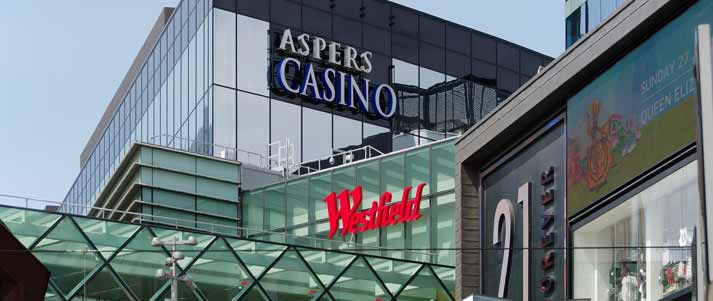
Credit: Matt Buck - Flickr
Oxford Street and Regent Street are arguably the most famous London high streets, and they're home to the flagship stores of some of fashion's biggest brands. River Island, H&M and Primark all have enormous shops here, as well as some other big-name and high-end labels.
Oxford Street also houses Selfridges, the world-famous department store. Along with Harrods, this probably isn't somewhere where you'll be able to afford to shop too much. But given how big they both are, and the sheer range of products within them, it's an experience just to spend a few hours looking around.
London also has its fair share of shopping centres – notably the two Westfields (one in West London, one in East), Brent Cross and Canary Wharf. Of course, there are dozens more shopping centres in the city, but they are arguably the biggest and most popular of the bunch.
At the other end of the spectrum, you have Camden, a veritable treasure trove of alternative clothing and independent stores. Throw in Carnaby Street, Spitalfields Market, Covent Garden, Brick Lane plus a whole load more, and you're spoilt for choice!
Eating out
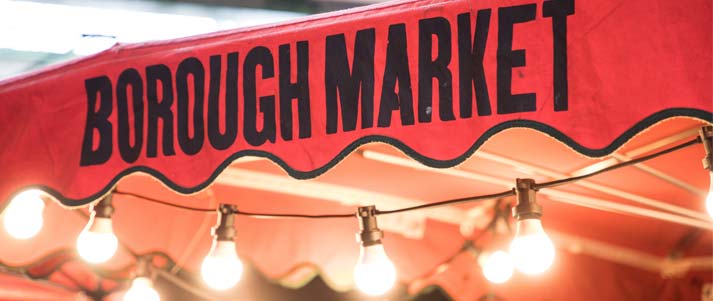
Credit: charnsitr – Shutterstock
Without a shadow of a doubt, Borough Market is the most well-known food market in the city. It's open six days a week, but for the full experience, you'll want to go when the main market is open between Thursday and Saturday.
Other popular food markets and street food venues include Flat Iron Square, Box Park in Shoreditch, Leather Lane Market, Greenwich Market, Camden Market, Whitecross Street Market and Pop Brixton.
If you'd rather go somewhere with a more traditional 'sit down and order your food' kinda vibe, plenty of places offer that too. The Breakfast Club has a few branches dotted across London, offering not only great breakfasts and brunches, but great comfort food for any time of the day.
Fans of curry should look no further than Brick Lane, which has over 20 curry houses to choose from. And sticking with Asian food, China Town has more than its fair share of – you guessed it – Chinese restaurants. But beware: this place can be absolutely rammed with tourists at weekends.
North London has a big Turkish population, and as such it's got some of the best Turkish restaurants too. We'd personally recommend Gökyüzü (of which there are a few branches), but explore the area for yourself and you'll no doubt discover somewhere just as good!
For the meat-free among you, new vegan restaurants are popping up in London all the time. Mildred's has actually been around for years, and now has restaurants in Camden, Covent Garden, Dalston, King's Cross and Soho. In terms of vegan value, it's hard to look past TAI Buffet (Shepherd's Bush) which offers an all-you-can-eat lunchtime buffet for just £8.
But again, it's worth stressing that London is absolutely massive, and sometimes the best way to discover places to eat is just to discover them for yourself!
Culture

Credit: Mykolastock – Shutterstock
London's not a tourist hotspot for nothing. There's no shortage of things to do in the city, no matter what your taste – and there are plenty of cheap activities too.
If you fancy a spot of edutainment, South Kensington is the place to go. This corner of West London houses three museums within a stone's throw of one another: the Science Museum, Natural History Museum and Victoria and Albert Museum (a museum of art and design). And best of all, they're all free to enter!
Other popular museums in London worth a visit (again, all free) include the British Museum, Tate Modern, Imperial War Museum and the Wellcome Collection.
In amongst the concrete jungle, London also has its fair share of parks. In the centre, you've got the likes of Hyde Park and Regent's Park, while a little further out you've got Greenwich Park, Hampstead Heath, Brockwell Park and Battersea Park.
If you're prepared to travel further still, Bushy Park and Richmond Park offer a taste of the countryside (and a lot of deer) in South West London. And while you're in Bushy Park, why not cross the road and visit Henry VIII's very own Hampton Court Palace?
Fans of the performing arts have no excuse to get bored in London. Aside from the West End and all of the world-class theatres and productions within it, London is littered with entertainment venues.
The O2 Arena and Wembley Arena are by far the biggest venues in the city and regularly host concerts, comedy and even sports. London also has a number of slightly smaller (but still pretty big) venues, including the Hammersmith Apollo, Royal Albert Hall, Roundhouse and Alexandra Palace.
Finally, it's worth remembering that thanks to London's excellent transport links, even places on the fringes of the city (and beyond) are ripe for a day trip.
Thorpe Park, Chessington World of Adventures, Legoland Windsor and Warner Bros Studio Tour – The Making of Harry Potter are just a handful of the days out on offer away from the centre of London.
Sport
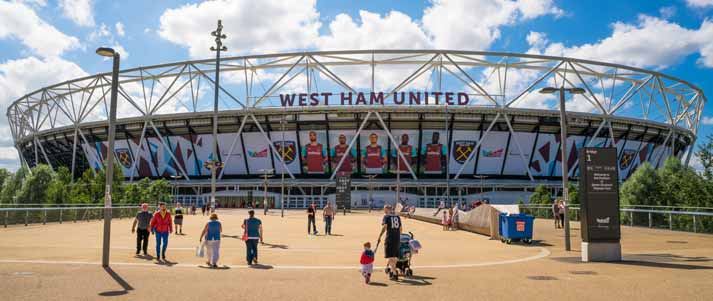
Credit: BBA Photography – Shutterstock
More than a handful of London's football clubs ply their trade in the Premier League. As a neutral, your best bet for getting tickets is probably West Ham. Tickets are fairly easy to get hold of and won't break the bank!
However, if you don't mind paying a bit more and booking a little earlier to grab a seat, Arsenal, Chelsea and Tottenham all consistently place high in the league and play games in European competitions too.
If your budget can't stretch to the Premier League, there are plenty more London football clubs throughout the Football League and non-league. Some of the bigger names include Charlton, Millwall and AFC Wimbledon, while non-league Dulwich Hamlet have also gained a real cult following in recent years.
Of course, we can't move on without mentioning the home of English football: Wembley Stadium. As well as hosting major finals (and some semi-finals), most England home games are played here too. Throughout the year, Wembley also plays host to NFL, rugby league and boxing.
Away from football, London's also host to Twickenham Stadium (the home of the English rugby union team) and Lord's (widely known as the home of cricket). At club level, rugby union fans can visit Harlequins and Saracens, while cricket fans can watch Middlesex at Lord's and Surrey at The Oval.
Arguably London's most famous sporting venue is Wimbledon, and every summer you'll have the opportunity to watch tennis' most prestigious tournament play out on the famous grass courts.
London's Olympic Park continues to host all manner of sports, in particular athletics and cycling. Or, if you'd rather not pay to watch sport, the London Marathon and the Boat Race both attract thousands of spectators as they line the streets and river banks respectively.
Not convinced that London is the place for you? Don't worry – we've got guides for loads of the UK's most popular student cities.

